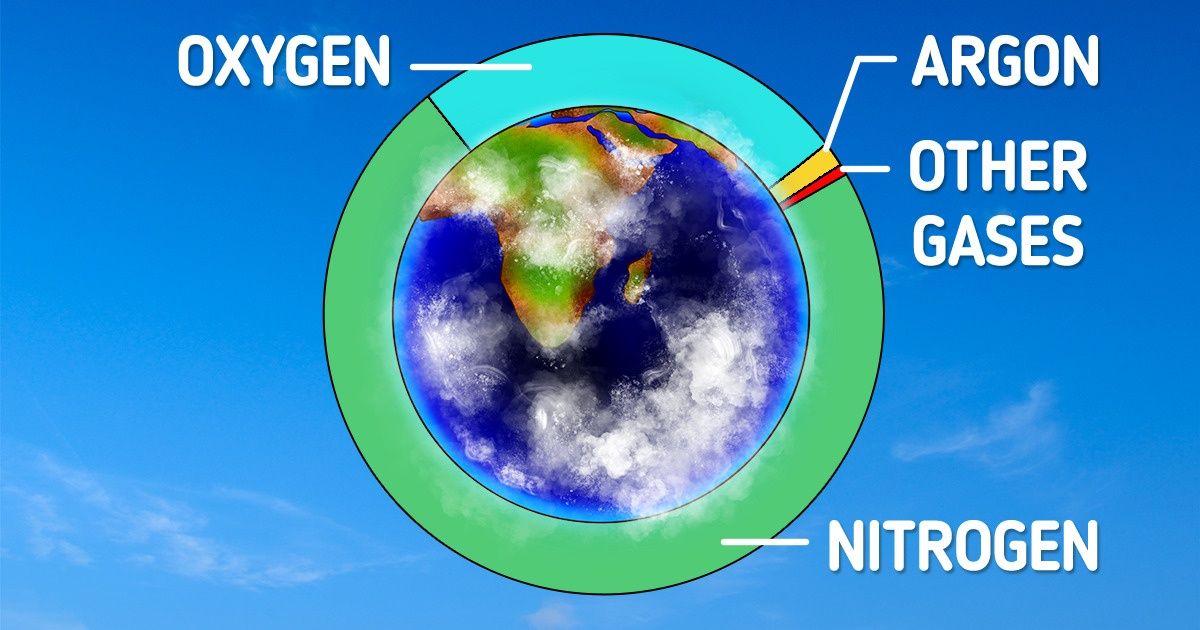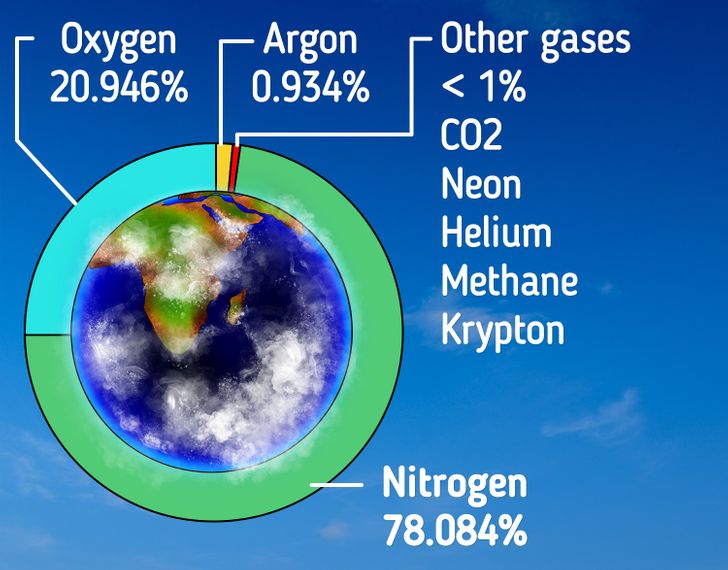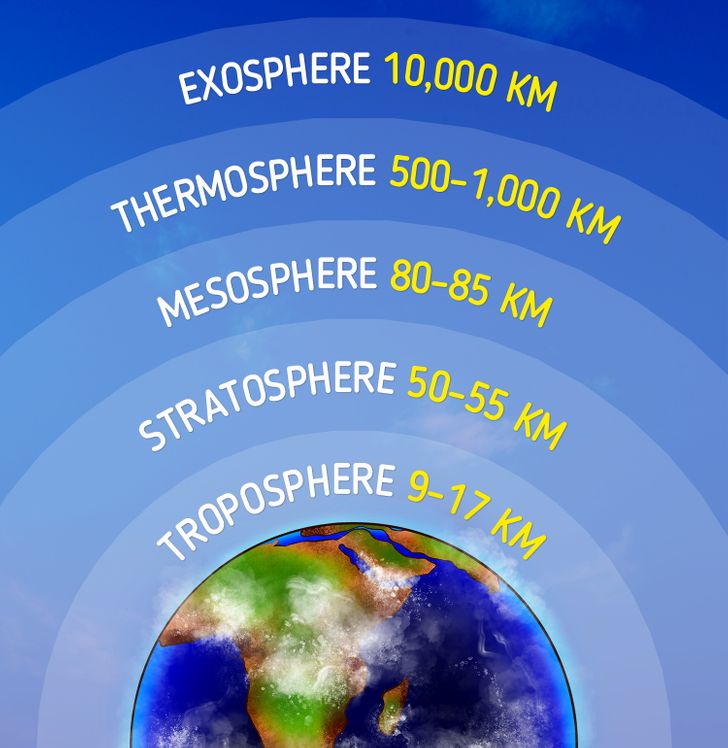What Air Is Made Of

The word “oxygen” is often used as a synonym for “air.” But the former is only a part of the latter, and most of the air is made of totally different gas.
5-Minute Crafts is going to tell you what air is made of and if it’s the same in different parts of the atmosphere.
What air is made of

3 main components of the air are nitrogen, oxygen, and argon.
- Nitrogen is a 2-atom gas without color, taste, or smell. It’s present in all organisms, mostly in proteins and nucleic acids (DNA and RNA), and it’s the base of the air we breathe. 78.084% of the air is nitrogen.
- Oxygen is another 2-atom gas without color or taste. It provides energy in combustion and aerobic respiration. Oxygen is an important part of the air. It’s 20.946% of the atmosphere.
- Argon is an inert 1-atom gas with no color or odor and a very low level of chemical activity. It’s 0.934% of the air.
The other gases in the atmosphere consist of CO2 (0.0416%), neon (0.001818%), helium (0.000524%), methane (0.000187%) and krypton (0.000114%). Additionally, 0%-3% of the air might be made by water vapor.
What air is like in different parts of the atmosphere

The atmosphere consists of 5 layers:
- The troposphere is the lower layer that contains about 80% of the atmospheric mass. It goes to the height of 5.5 miles (9 km) on the poles and up to 10.5 miles (17 km) around the equator. The troposphere contains almost all of the water vapor, which is why this is where most of the weather phenomena happen. It’s also quite dense. But the pressure, density, and temperature in the troposphere gradually decrease depending on the height. For example, the temperature goes down 6°C-7°C each kilometer.
- The stratosphere goes from the top of the troposphere and up to 31-34 miles (50-55 km) above the planet. The atmospheric pressure at the top of the stratosphere is about 1/1,000 of the pressure at sea level. Also, the ozone layer is in the stratosphere. It protects us from ultraviolet rays. Because of UV radiation, the temperature here rises together with the height. In the lower layers of the stratosphere, the temperature might be −60°C, and in the top, up to 0°C.
- The mesosphere starts at a height of about 31 miles (50 km) and ends at 40-53 miles (80-85 km). The concentration of ozone there is lower, so the temperature goes back down. So it’s the coldest place on the planet with an average temperature of about −85°C.
- The thermosphere goes up to 310-521 miles (500-1,000 km). The upper edge might migrate due to solar activity. The temperature there is constantly rising and might reach 1,500°C. The air is so thin that a separate molecule of oxygen might be .6 miles (1 km) away from hitting another molecule.
- The exosphere is the upper layer of the atmosphere that can reach a height of 6,213 miles (10,000 km). The air there is extremely thin. The molecules are so far apart that they can travel hundreds of kilometers without hitting one another. So the air in the exosphere doesn’t work like gas anymore, and the particles escape into space all the time.
Share This Article